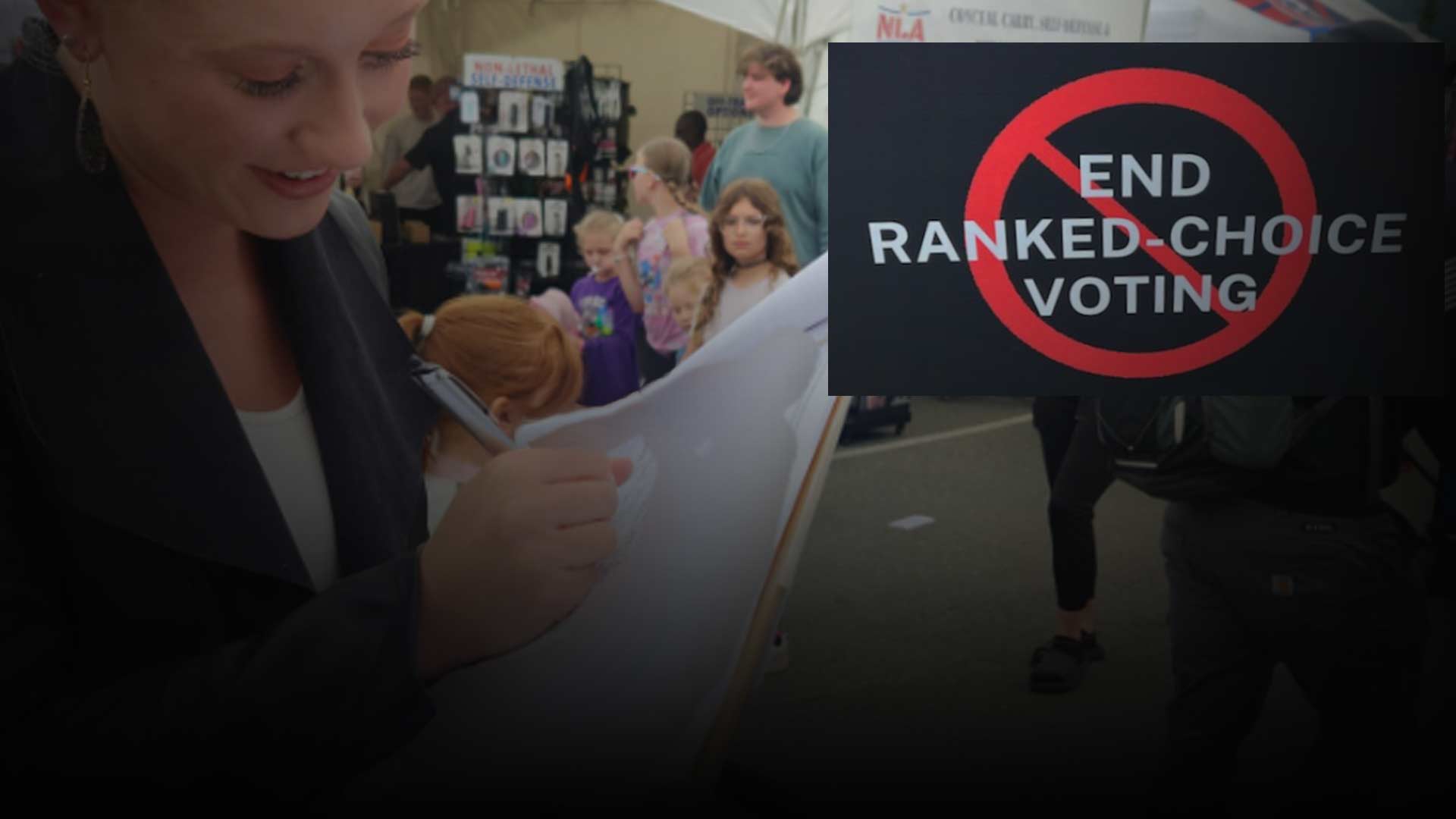
By Sarah Montalbano – Alaska Policy Forum
Alaska’s teachers are outnumbered by other staff in all but seven school districts. For every four teachers in Alaska, there are five staff members performing functions peripheral to the business of teaching Alaska’s students.
To improve Alaska’s dismal education outcomes, funding should be used to directly support students in the classroom. Yet education spending has been increasingly funneled into administrative and support roles, rather than investments in teachers and resources to improve the quality of education for students. Between 2002 and 2020, total education expenditures in Alaska rose by almost a third after adjusting for inflation. Teachers got a meager share of that increase: instructional salaries increased only one percent per pupil, but school and general administrator salaries increased by 42 percent and 18 percent respectively.
Looking at a snapshot of district staffing in the 2021-2022 school year reveals Alaska’s priorities. Data from the National Center for Education Statistics (NCES) District Search tool provides the number of classroom teachers, other staff, and the total number of employees in each of Alaska’s school districts, among other financial data. NCES data is current as of the 2021-2022 school year. Other staff includes all positions that aren’t teachers, such as district administration, principals, guidance counselors, instructional aides, librarians, and more.
Only 26% of the Tanana City School District’s total staff are teachers.
The research shows that investing in high-quality teachers is one of the most important predictors of student success. While school and district leaders may matter in creating a school climate conducive to learning, most administrative staff are not as critical to forming the basic literacy and numeracy skills students needed to meet their full potential. A large number of teachers in a district compared to the number of other staff suggests that the district is investing more in teaching and resources that directly affect students. Conversely, a small number of teachers compared to other staff suggests the district is focusing too much on functions peripheral to teaching basic skills.
On average, each district’s ratio of teachers to other staff is 0.75 — or three teachers for every four members of other staff. Dividing all the teachers statewide by all other staff statewide shows there are four teachers for every five members of other staff.
Of Alaska’s several major school districts, the Mat-Su Borough School District reported the highest ratio of teachers to other staff of nearly one to one (0.96). Teachers were 49% of MSBSD’s staff and expenditures were $15,939 per student, including state, local, and federal funds.
Districts should prioritize teachers and students in the classroom, not administrative bloat.
Anchorage School District reported a teacher-to-other-staff ratio of nearly the same (0.95). Teachers comprised almost 49% of all staff. ASD’s total expenditures per student were $16,525, including state, local, and federal funds. The Fairbanks North Star Borough School District reported slightly more than three teachers for every four members of other staff (0.76). Teachers are 43% of the district’s staff and expenditure totals per student were $18,103. See the table in the appendix for the ratios of all districts.
The district with the lowest ratio of teachers to other staff is the Tanana City School District (0.35), which means that for each of the district’s teachers, there are almost three other staff members. Only 26% of the district’s total staff are teachers.
The district with the highest ratio of teachers to other staff is the Aleutian Region School District (1.63). For the district’s four teachers, there are only two full-time staff members and one part-time staff member, as counted by full-time equivalent hours. 62% of the district’s total staff are teachers.
Only seven of Alaska’s 53 school districts reported teachers comprising 50% or more of the district’s total staff. Those districts are Alaska Gateway (69%), Aleutian Region (62%), Craig City (51%), Kenai Peninsula Borough (52%), Nome Public Schools (55%), Sitka (54%), and Yakutat (50%). Mt. Edgecumbe High School also reported 51% of its staff are teachers.
ALASKA WATCHMAN DIRECT TO YOUR INBOX
While this data only shows a snapshot in time — the 2021-2022 school year — data back to 2000 shows that the ratio of teachers to other staff has decreased statewide, from nearly one teacher to each member of other staff to the current ratio of four teachers to five members of other staff.
While some of the functions performed by other staff are surely worthwhile, they remain peripheral to teaching Alaska’s students the basic skills needed to succeed. Districts should prioritize teachers and students in the classroom, not administrative bloat.
Table: Ratios of teachers to other staff by district in the 2021-2022 school year. Alaska’s five major school districts are highlighted in gold.

The views expressed here are those of the author.








14 Comments
Here’s another good example that the $250 million school district want is not needed. I’ve said many times on here that we need more bang for our buck. Show improvement and we’ll talk about it. Our children can’t learn if they don’t have teachers. we don’t need that many support staff. it’s time schools CUT THE FATand hire more teachers to teach our children. This is a top down problem and can be solved very easy IF the person in Juneau in charge of education does their job and it’s obvious where the fat is that needs trimming.
Thank you, Sarah, for this eye-popping piece and thank you Watchman for publishing it.
And yet, just try to get an answer, any answer, from the bloated bureaucracy at the ASD. I asked repeatedly for the high school curriculum for “social studies” (since they don’t teach history any more) and heard nothing but crickets. Not only do they have thick layers of administrators, the ones they have are incompetent.
Check Arkansas’ brand new education agenda for a model for Alaska.
Should lay off the custodians and the principals and the kitchen staff and the bus drivers and the payroll clerks and the secretaries. Let the teachers clean the bathrooms and why have lunch at all? Let’s get back to basics: PE, weekly readers, and arithmetic worksheets. And prayer three times a day.
There you go! You are getting the idea Lucinda! This is what homeschool teachers do all the time!
Oh geez friend, did you take me seriously?
Wow! Maybe the most important Watchman article so far this year.
There is a reason why Alaska’s school perform so poorly. The state thinks the only solution to everything is money. Yet look where that attitude leads! Homeschool and private schools do a whole lot with very little. Look at the fruits they bear.
Teachers move to administration because they make double. What a messed up system that only the unions support. Yes look to Arkansas for the answer.
More 1+1 = 5 from the Alaska Policy Forum. This figure includes all support staff, which includes many para-educators as required by an IEP’s, Alaska Law, and Federal Mandates. The number reported will likely get even worse as the teacher shortage continues to ramp up while our state completely loses any competitive advantage that still seems to be perceived (but is not real) as unlicensed staff are forced to take classrooms due to a lack of teachers. There are NO teachers to choose from or add – that don’t require a visa. Maybe that should have been the story.
Question Is support staff like janitor, cooks, special Ed and/or librarians consider considered with teachers OR administration? Seems like they should designate teachers, support staff, like teacher’s Ad, ,librarian cooks. Janitorial and administrative office staff, those not working with students. I still imagine the administrative is bloated. Too many school district divided into many areas.
I’m not sure who is considered “staff” and not teachers, but there are adjunct services provided by occupational therapists, physical therapists, speech/language pathologists, guidance counselors, etc. These people are vital to the operation of a school for all students. And if you remove other staff, such and janitors, secretaries and kitchen workers school won’t work at all. Dumb.
Does this also take into account all the maintenance personnel (other than janitorial) needed to keep the schools functioning? Groundskeepers, electricians, plumbers, HVAC, carpenters and all the materials, equipment, and administrators of those trades? These people are behind the scenes and are usually not even thought of. One might think that it would be better to contract with a private sector business, but I know oftentimes the ASD maintenance crew will come up with a solution that will save the district hundreds of thousands of dollars…if only the Powers-That-Be would implement their ideas and let them do their jobs!
Clarification would be good. I was assuming that Teachers-Other Staff were probably the folks that directly deal with the children. For example, the teachers aids that help the teacher in the classroom. I think of the healthcare system where doctors/nurses/physician assistants and others that had direct contact patient care are in one group, and the others non-contact patient care groups or support staff groups (maintenance being support).